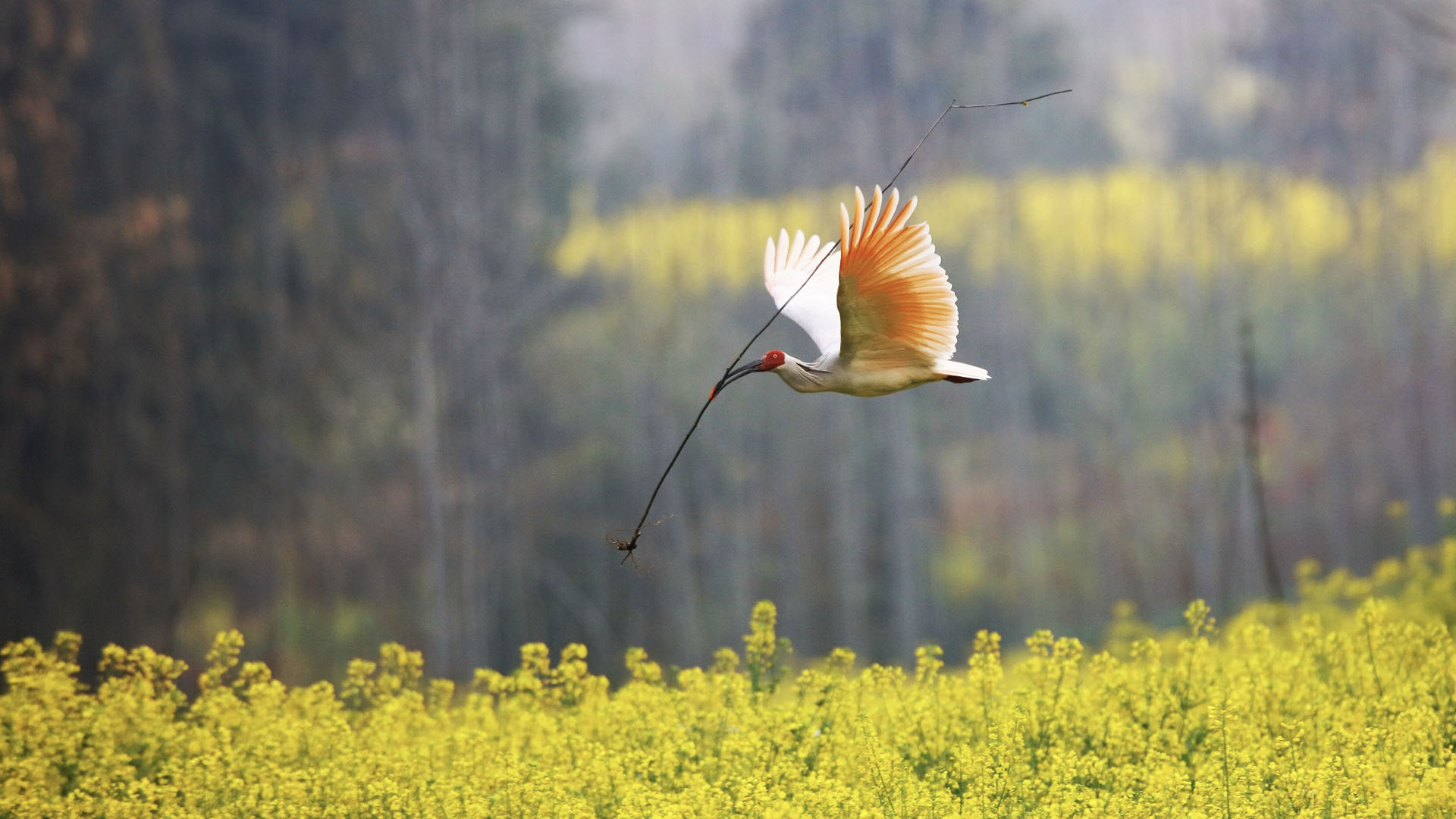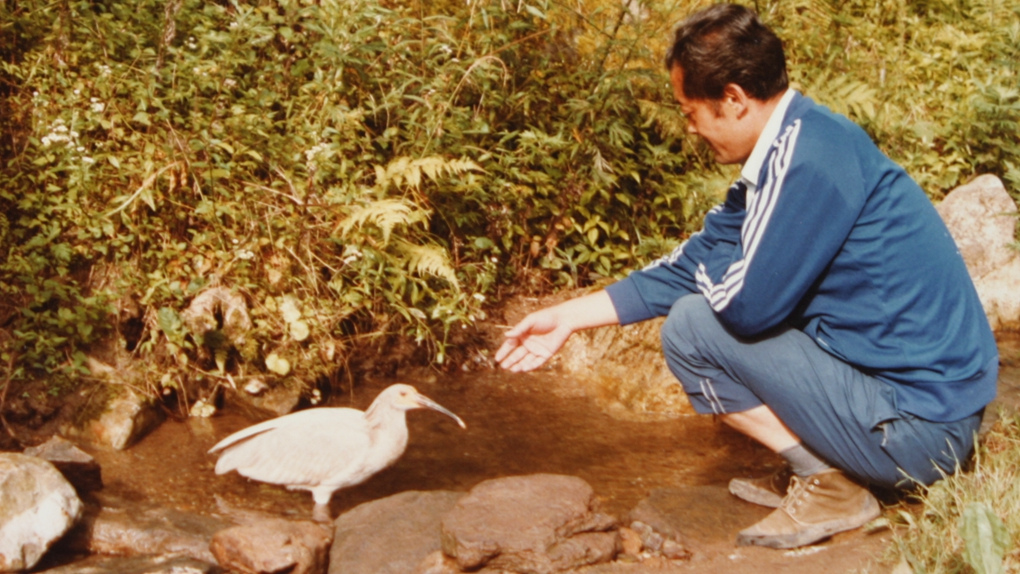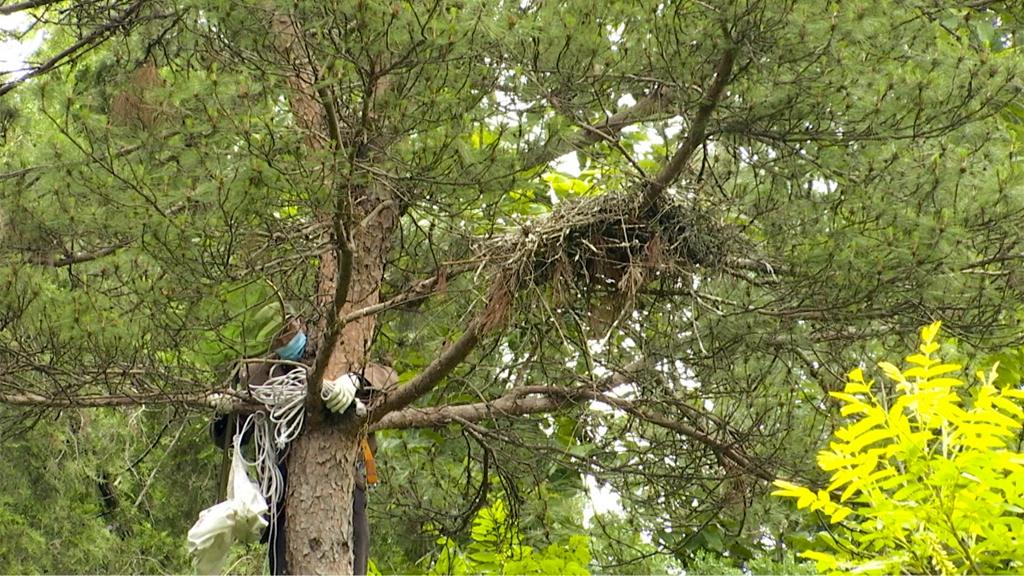
Animal
22:23, 30-May-2018
China’s miraculous revival of the crested ibis
By Tao Yuan
02:42

“I saw one feeding by the pond," recounted 82-year-old ornithologist Liu Yinzeng. "Suddenly, I felt nervous. I took out my camera. I was about 30 meters away from it. With a 50mm lens, the bird was only a dot in my viewfinder, but I needed evidence that I saw one. I approached it, not in a straight line, but in a zigzag, so as to not scare it off. Every few meters, I snapped another few shots. At about 20 meters away, I had to crouch down and crawl toward it.”
Liu Yinzeng was describing his discovery of one of the seven remaining crested ibises in the world in May 1981.
I turned my head to look at the flock of birds feeding in a protective canopy in Yang County in northwest China’s Shaanxi Province, half confused why these grey-feathered birds slightly bigger than a pigeon, with long, curved beaks were worth the effort.
Liu Yinzeng was too passionate to take note of my confusion. “Every press of the shutter sounded thunderous," he went on. "And soon my 36-exposure roll film was gone.”

In the 1960s, the widespread use of pesticides and fertilizers, and a loss of habitat all but wiped out the entire species of crested ibis. /Photo via VCG
In the 1960s, the widespread use of pesticides and fertilizers, and a loss of habitat all but wiped out the entire species of crested ibis. /Photo via VCG
The crested ibis once flourished in northeast Asia, in countries including China, Japan, S. Korea and Russia. In Chinese, it’s called Zhu Huan, or Red Ibis. Every year after the breeding season which ends around June, the bird sheds its grey feathers and grows the peach ones under its wings that inspired its name. In the 1960s, the widespread use of pesticides and fertilizers, and a loss of habitat all but wiped out the entire species.
At one point, ornithologists suspected the species had gone extinct. So in 1978, the Chinese Academy of Sciences, under pressure from the international zoology community, sent Liu Yinzeng, then a researcher at the zoology department, on a rediscovery mission.
Liu, then in his mid-40s, spent three years searching across nine provinces, showing pictures of the crested ibis to villagers in search of leads. But again and again, he was disappointed. On a few occasions, he was told the bird had been hunted and killed for their pretty pink feathers.
“Toward the end, it felt like my mission was to prove the species had indeed died off,” he said, “which was harder because, in order to prove that, you need to scout every inch.”

Liu Yinzeng crouches next to a crested ibis. /Photo courtesy of Liu Yi
Liu Yinzeng crouches next to a crested ibis. /Photo courtesy of Liu Yi
So when the 1981 breakthrough came, Liu Yinzeng almost couldn’t believe his eyes. “It was so precious,” he said.
That one bird he saw feeding by the pond eventually led to the discovery of seven, two pairs and three chicks, all spotted within one week in the mountains of Yang County. They carried the hope of the entire species.
A work group was quickly assembled here, dedicated to the revival of the species. There was no room for mistakes.
“It was an impossible mission. Imagine, seven birds in the entire world. How did you do it? You must have been so nervous,” I fired a string of questions at Liu Yi, head of one watch station deep in the mountains as he finally took me out in the wild.
It’s breeding season. Liu Yi’s team is touring the nests to bring down the chicks to tag them with metal and plastic rings, a process known as bird-banding. The subsequent recapture of the birds will reveal information on their life history.

A worker climbs a tree to collect a crested ibis chick from its nest for bird-banding. /CGTN photo
A worker climbs a tree to collect a crested ibis chick from its nest for bird-banding. /CGTN photo
“I mean…” I carried on wide-eyed, “Anything could happen. They could’ve been hunted down, eaten by predators. What’s your secret method?”
Here’s the source of my curiosity: Through a successful breeding program, the population of the crested ibis now stands at around 3,000. There’s a captive population, but most are thriving in the wild. The species is still endangered, but the revival has been nothing short of a conservation miracle.
Liu Yi gave me a mysterious look. He joined the team in 1991 when the crested ibis population was a mere 15 birds. “It’s been almost 30 years now,” he said while checking a nest with his binoculars. A teammate of his was getting ready for some serious tree climbing. Behind us was a tent in camouflage that’s easy to miss without pointers from a pro.
“Secret method?” He grinned. “Yes, we did have one.” Pieces of tree bark fell down into our eyes as the climber inched on, but the moment was too precious for any blinking. “We used to stay in tents like this one 24/7 to make sure they were safe,” Liu Yi reveals. “Disappointed?” he asked me. “Nothing special, just the most low-end way we could think of. And it happened to be the most effective way.” I turned my gaze away from the nest on the treetop to look at this man who dedicated his whole life to a bird.
“Was it worth it?” I finally found the courage to ask.
“It was worth every second,” he answered.
The climber handed us the chick as he returned to the ground, its feathers still a soft, fuzzy down. The fledgling looked startled and helpless in our hands. But in less than a month, it’ll shoot for the sky.
(Video by Luo Caiwen; Jiang Zhengfeng contributed to this report.)

SITEMAP
Copyright © 2018 CGTN. Beijing ICP prepared NO.16065310-3
Copyright © 2018 CGTN. Beijing ICP prepared NO.16065310-3